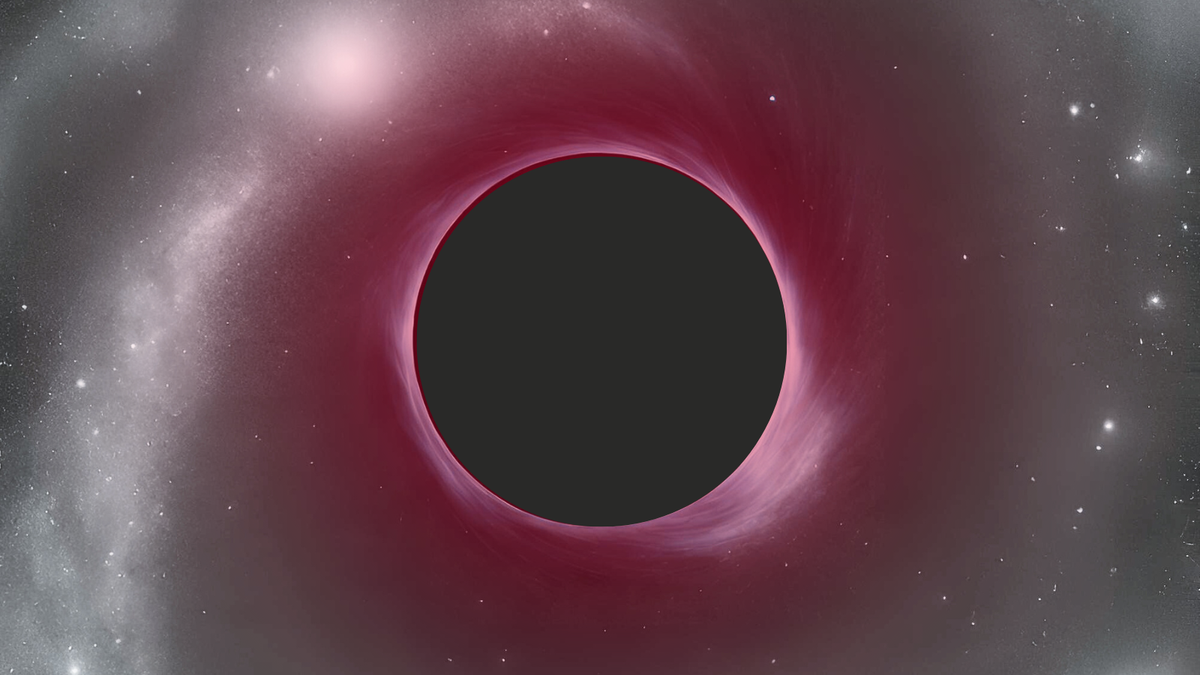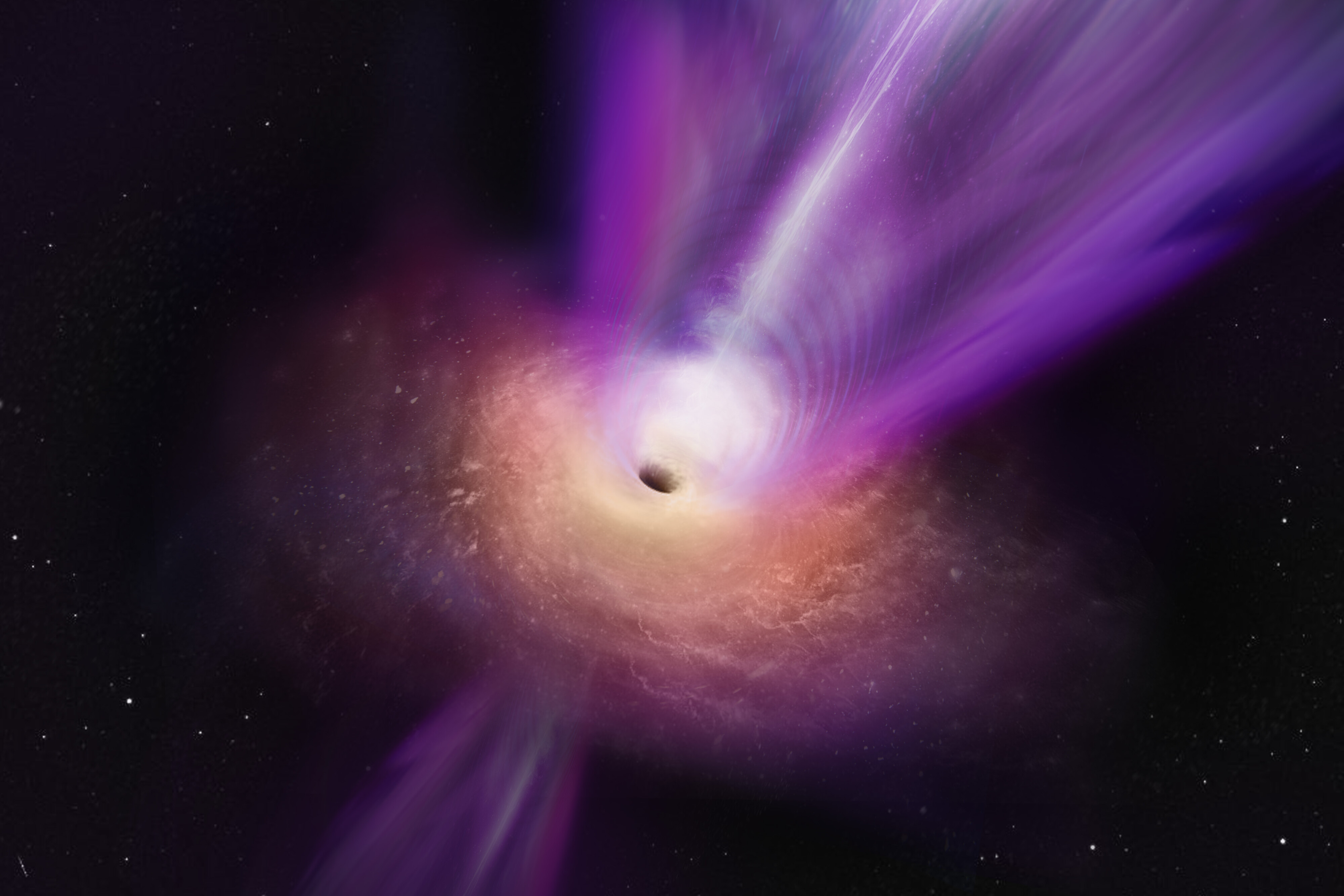
Using the James Webb Space Telescope (JWST), astronomers have discovered an “extremely red” supermassive black hole growing in the mysterious early universe.
The red color of the supermassive black hole, seen about 700 million years after the Big Bang, is the result of the expansion of the universe. As the universe expands outward in all directions, the light heading toward us is redshifted. In this case, the redshifted light indicates a thick mantle of gas and dust covering the black hole.
By examining data from the James Webb Space Telescope, the astronomy team led by Lukas Furtak and Adi Zitrin of Ben-Gurion University of the Negev were able to determine the mass of the supermassive black hole. It has about 40 million times the mass of the Sun, and is unexpectedly massive compared to the galaxy in which it lives.
The team also found that the supermassive black hole, located about 12.9 billion light-years from Earth, is rapidly feeding on the gas and dust surrounding it. In other words, it grows.
Related: The brightest quasar ever gets its energy from a black hole that devours a 'sun every day'
“We were very excited when the James Webb Space Telescope began transmitting its first data. We were scanning the data that came in for UNCOVER, and three very compact but prominently blooming red objects stood out and caught our attention.” He said in a statement. “Its appearance as a ‘red dot’ immediately led us to suspect that it was a quasar-like object.”
“The three red dots”
Quasars are created when copious amounts of matter surround supermassive black holes like this one. This material forms a disk of gas and dust called an accretion disk that gradually feeds the black hole. The black hole's massive gravitational influence moves this matter, generating extreme temperatures and causing it to glow.
In addition, the matter that does not fall into the supermassive black hole is directed to the poles of the cosmic giant. Particles in these regions are accelerated to speeds approaching the speed of light as highly parallel jets. When these relativistic jets explode, the explosions are accompanied by bright electromagnetic emissions.
As a result of these phenomena, quasars supported by supermassive black holes in active galactic nuclei (AGN) are often so bright that the light they emit often outweighs the combined light of every star in the surrounding galaxy.
The massive amount of radiation emanating from around this supermassive black hole caused it to take on a tiny dot-like appearance in the JWST data.
“Analysis of the object's colors indicated that it was not a typical star-forming galaxy. This supports the supermassive black hole hypothesis,” Rachel Bezanson, of the University of Pittsburgh and co-leader of the UNCOVER program, said in the statement. “Combined with its small size, it became clear that it was likely a supermassive black hole, although it was still different from other quasars present at those early times.”
The early quasar would not have been seen even by the powerful infrared eye of the JWST without a little help from the impact predicted by Albert Einstein in 1915.
Einstein lens
Einstein's theory of general relativity proposes that objects with mass distort the fabric of space and time, which really come together as a single entity called “space-time.” The theory continues that gravity arises as a result of this curvature. The greater the mass of an object, the greater the “extreme” curvature of space-time.
So this curvature not only tells planets how to move around stars and stars and how to move around the centers of their galaxies, but it also changes the paths of light coming from those stars.
The closer light is to an object with mass, the more “curved” its path is. Different paths of light from a single background object can thus be bent by the foreground, or “lens object,” changing the appearance of the background object's location. Sometimes, the effect can cause a background object to appear in multiple places in the same sky image. Other times, the light from a background object is simply amplified, and that object is magnified.
This phenomenon is known as “gravitational lensing.”

In this case, the James Webb Space Telescope used a galaxy cluster called Abell 2744 as a foreground lensing object to amplify light from background galaxies, which are too distant to see. This revealed the very red quasar they focused on, which was originally three red dots.
“We used the numerical lensing model we built for the cluster of galaxies to determine that the three red dots must be multiple images of the same background source, seen when the universe was only about 700 million years old,” Zittrain said.

Further analysis of the background source revealed that its light must be coming from a compact area.
“All the light from that galaxy would have to fit into a region as small as an existing star cluster,” said team member Jenny Green, a researcher at Princeton University. “The magnification created by gravitational lensing has given us fantastic size limits.” statement. “Even if we packed all the potential stars into such a small region, the black hole would end up making up at least 1% of the total mass of the system.”
This discovery adds further mystery to how supermassive black holes, which can be millions (or even billions) of times as massive as the Sun, grew to such massive sizes during the infancy of the universe.
“Several other supermassive black holes in the early universe have now been found to exhibit similar behavior, leading to some interesting perspectives on black hole and host galaxy growth, and the interaction between them, which is not well understood,” Green said. .
The James Webb Space Telescope has detected a large number of “little red dots” over time. These could also point to the feeding of massive quasars powered by black holes in the early universe, which could mean the mystery of amazing black hole growth could soon be solved.
“In a way, this is the astrophysical equivalent of the chicken-and-egg problem,” Zittrain concluded. “We currently don't know which came first: the galaxy or the black hole, how massive the first black holes were, and how they grew.”
The team's research was published on February 14 in the journal Nature.

“Web maven. Infuriatingly humble beer geek. Bacon fanatic. Typical creator. Music expert.”





More Stories
Scientists confirm that monkeys do not have time to write Shakespeare: ScienceAlert
SpaceX launches 23 Starlink satellites from Florida (video and photos)
A new 3D map reveals strange, glowing filaments surrounding the supernova